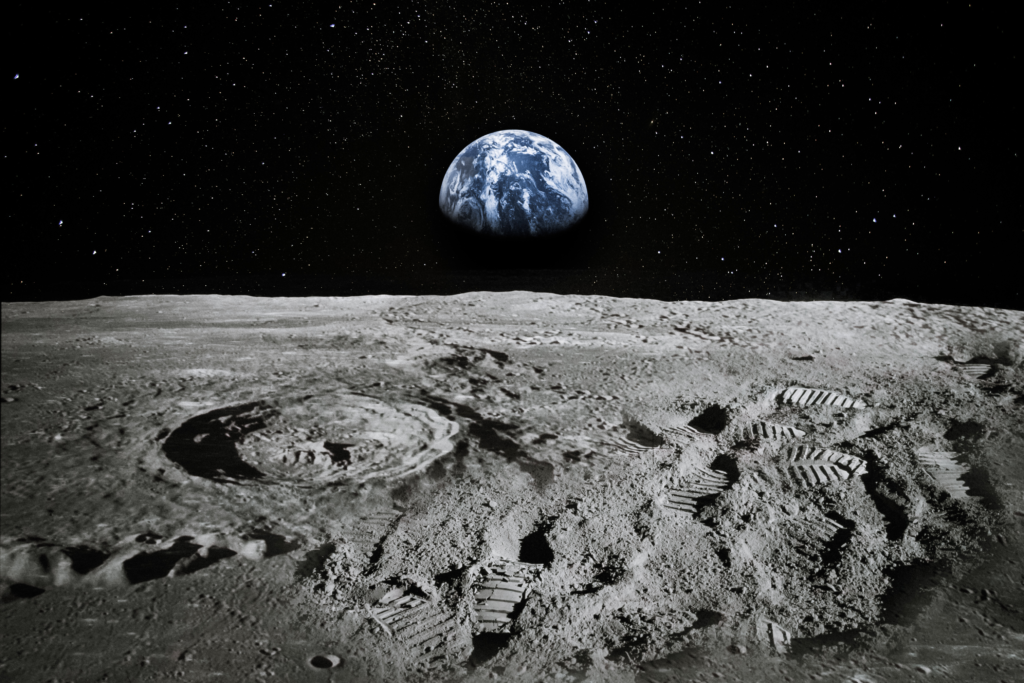India’s space exploration ambitions are reaching new heights with the Chandrayaan-4 mission, set to be launched in 2027. This next-generation lunar mission, led by the Indian Space Research Organisation (ISRO), promises not only to land on the Moon but to bring back precious lunar samples — a feat that will firmly establish India’s prowess in space exploration.
Why Chandrayaan-4 Stands Out After the success of Chandrayaan-3, which proved India’s capability in soft-landing on the Moon, ISRO is now preparing for its most advanced mission yet. Chandrayaan-4 will demonstrate a pioneering in-space assembly technique, an approach never before attempted by ISRO.
Table of Contents
Key Highlights of Chandrayaan-4 Mission
| Mission Feature | Details |
|---|---|
| Mission Type | Lunar Sample Return |
| Launch Year | 2027 |
| Total Mission Cost | ₹2,104.06 crore |
| Payload | 2-3 kg of lunar soil and subsurface material |
| Rockets Involved | Two LVM3 rockets |
| Mission Duration | 36 months |
| Key Technologies | In-space assembly, robotic arm, docking maneuvers |

Assembling the Mission in Space
Unlike previous lunar missions that launched as a single unit, Chandrayaan-4 will be assembled in space. The mission will be split into two launches using India’s LVM3 rockets. The first rocket will carry Stack-1, which includes the Ascender and Descender modules responsible for landing on the Moon and collecting samples. The second launch will carry Stack-2, containing the Transfer, Propulsion, and Re-entry modules for bringing the samples back to Earth.
Read this also: Green Future Summit 2024: Paving India’s Path to Net Zero with Innovation and Collaboration
Once the rockets reach an elliptical orbit around Earth, ISRO will perform complex docking maneuvers to integrate the two stacks into a single spacecraft. This in-space assembly allows ISRO to avoid payload limitations while reducing mission costs.
Mission Objectives: Beyond Landing
Chandrayaan-4’s primary goal is to collect 2-3 kg of lunar soil (moondust) from the Moon’s southern polar region. The Descender Module, equipped with a robotic arm and a drilling mechanism, will scoop up surface samples and dig into the lunar subsurface for additional material. These samples will be stored in sealed containers to prevent contamination and will be transported back to Earth.

But Chandrayaan-4 isn’t just about returning lunar material. The mission will also study the mineral composition of the Moon and probe for signs of water ice or other volatile elements, providing valuable insights into the Moon’s history and geology.
Pioneering Technologies
One of the most exciting aspects of Chandrayaan-4 is its ability to showcase India’s growing space capabilities. The mission will demonstrate in-space docking—a crucial technology for future crewed missions. Mastering this technique will allow ISRO to send astronauts to the Moon and even beyond.
Read this also: Air Quality Crisis: 6 Northern Indian Cities Struggle with Pollution, While Southern Cities Breathe Easy
The mission also includes a series of complex maneuvers, including the soft landing of the Descender module on the Moon’s surface and the subsequent take-off of the Ascender module after collecting samples. The Ascender will then dock with the Transfer and Re-entry modules parked in lunar orbit before returning to Earth.
Table: Chandrayaan-4’s Key Phases
| Phase | Description |
|---|---|
| Phase 1: Dual LVM3 Launch | Launch of Stack-1 and Stack-2 separately |
| Phase 2: In-space Assembly | Docking of the modules in Earth’s orbit |
| Phase 3: Lunar Landing | Soft landing of the Descender module on the Moon |
| Phase 4: Sample Collection | Robotic arm and drilling collect lunar samples |
| Phase 5: Return to Earth | Ascender module docks with Transfer & Re-entry modules; return journey begins |

India’s Path to Manned Lunar Missions
Chandrayaan-4 isn’t just about returning with Moon dust — it’s a stepping stone to future manned lunar missions. By 2040, ISRO aims to land an Indian astronaut on the Moon. The experience and technologies developed through Chandrayaan-4 will play a pivotal role in achieving that goal. With advancements in docking, in-space assembly, and lunar sample return, India is positioning itself as a global leader in space exploration.
Read this also: India’s Forex Reserves Hit Historic $692.3 Billion, Strengthening Economic Defenses
A Bold Step Forward
As Chandrayaan-4 prepares for its historic mission, ISRO continues to push the boundaries of what’s possible in space exploration. With a budget of over ₹2,100 crore and a vision to return with lunar samples, this mission marks a monumental leap in India’s space ambitions. Chandrayaan-4 will not only advance our understanding of the Moon but also open new avenues for India’s future space missions, including plans for a manned mission to the Moon.

Stay tuned as India embarks on one of its most ambitious space journeys yet. Chandrayaan-4 is poised to make history — and take Indian space exploration to new heights.









[…] Read this also: India Gears Up for Chandrayaan-4: A Groundbreaking Mission to Bring Moon Dust Home […]